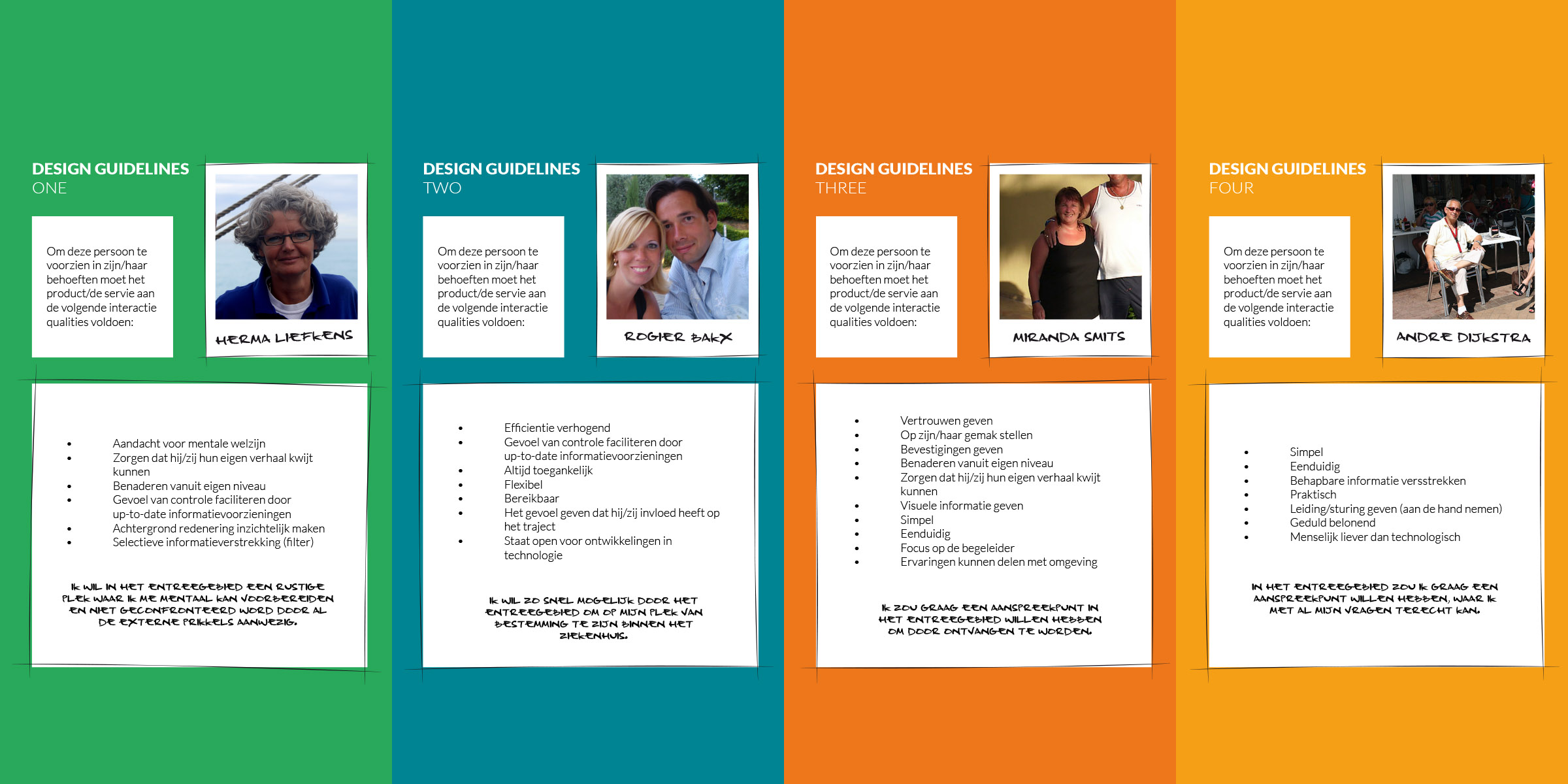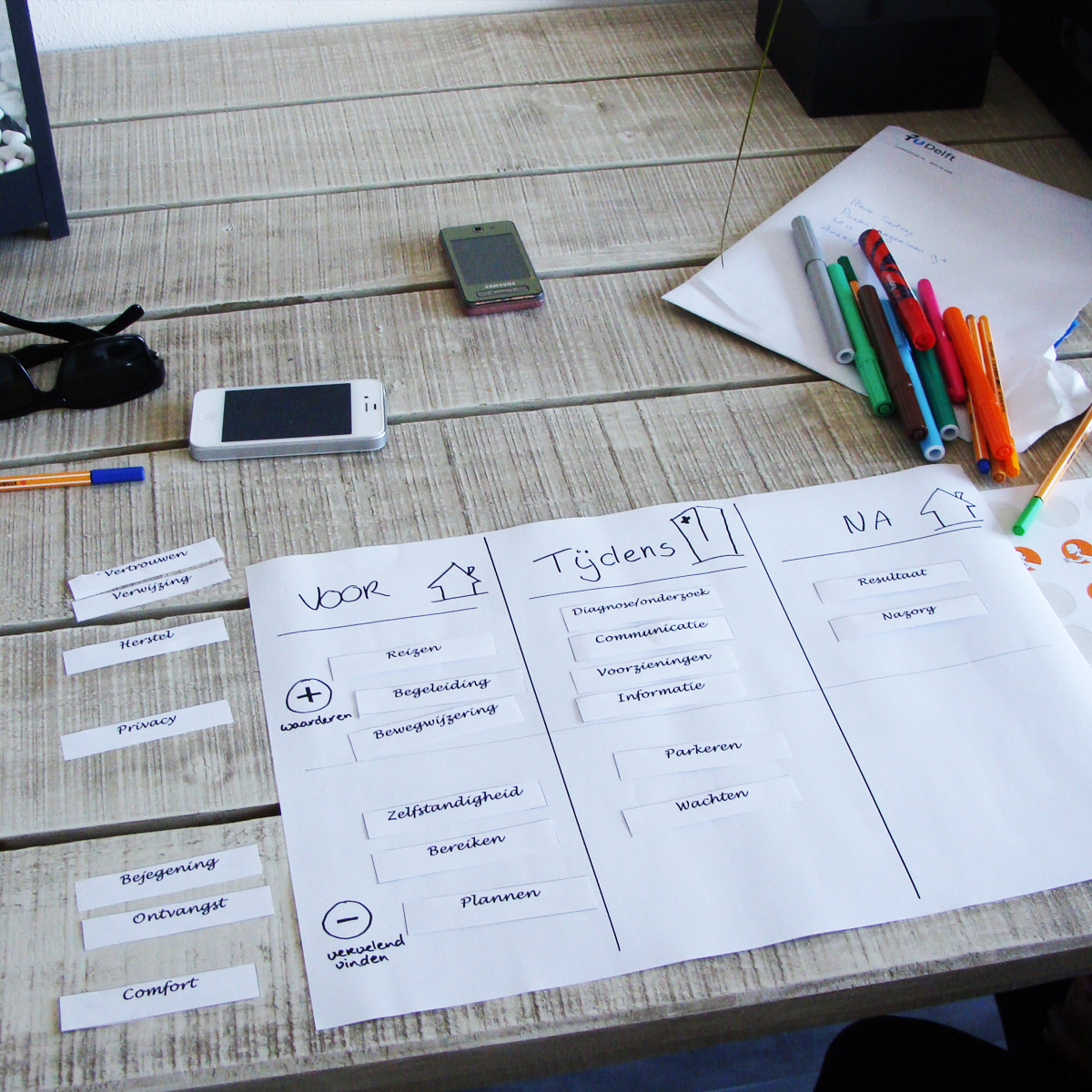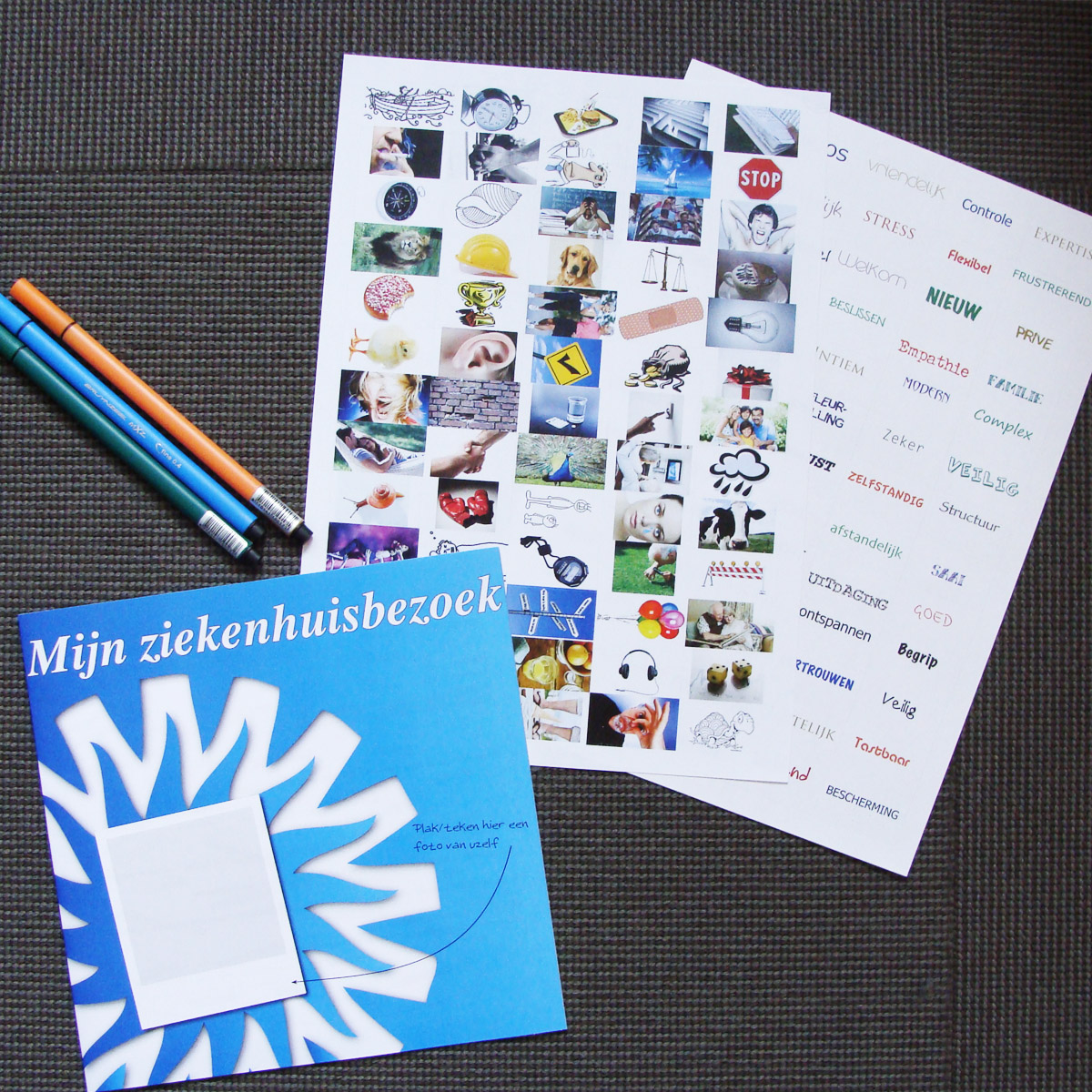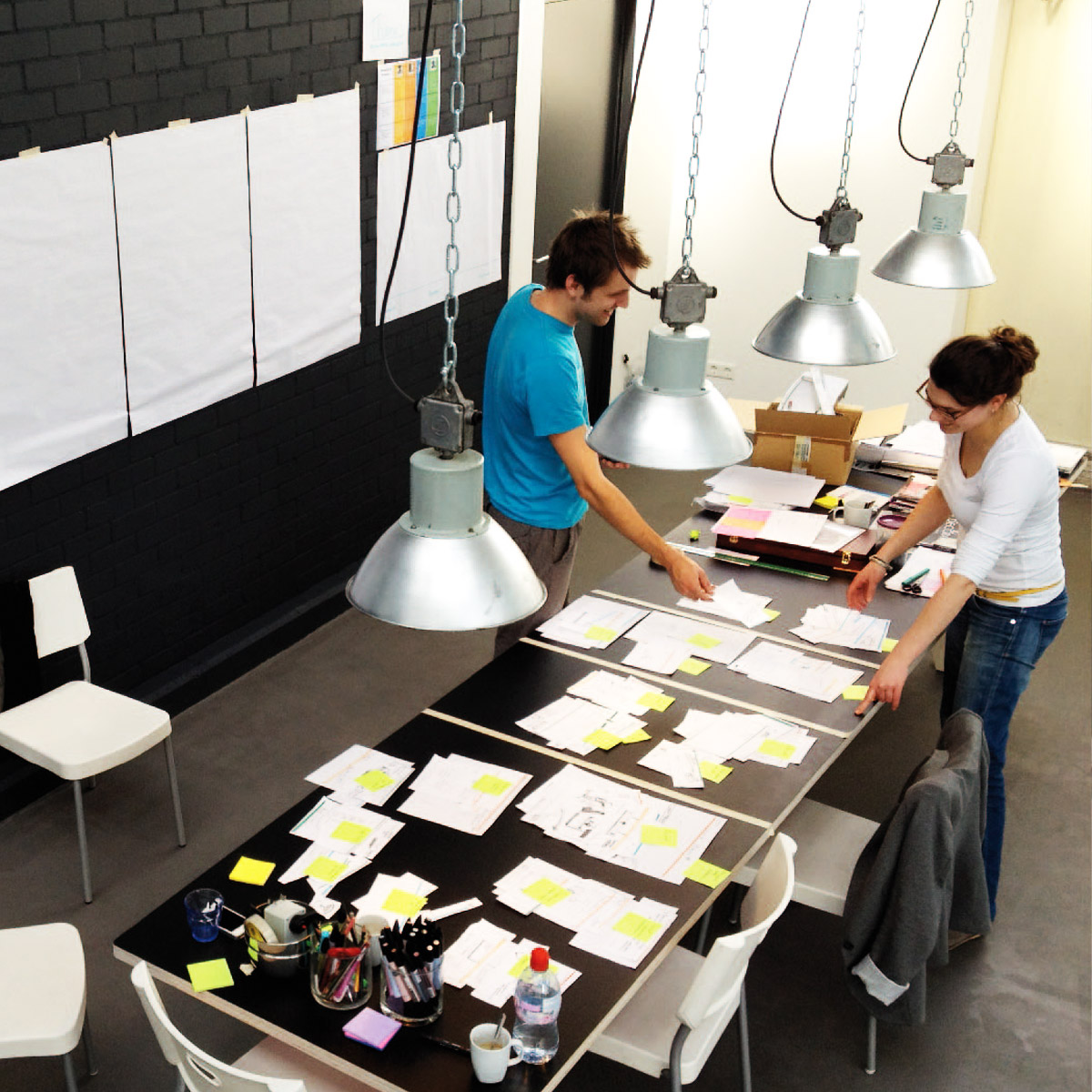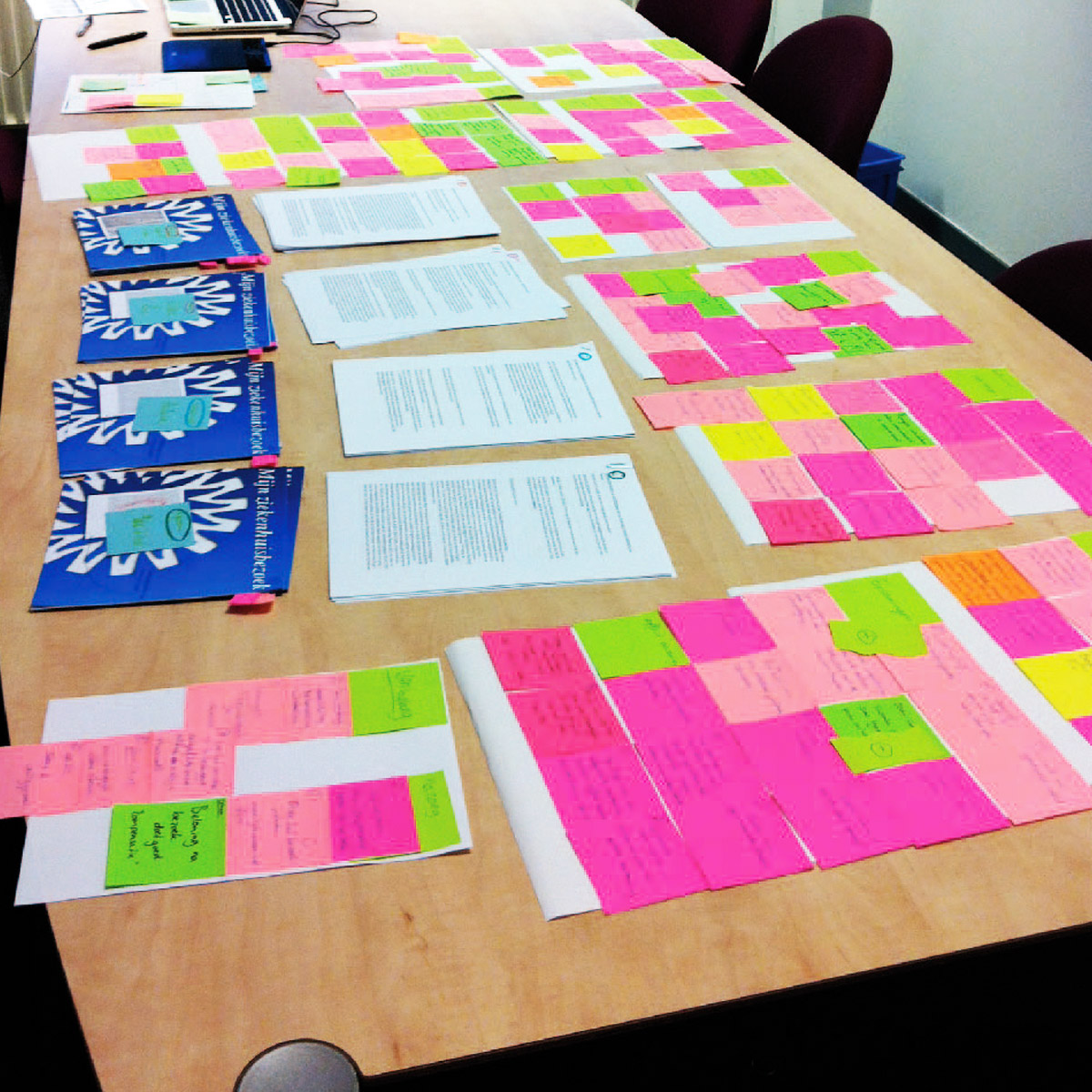summary of the UMCU research project
Within th e UMC Utrecht was a need to understand the opportunities to improve their reception and services in order to determine whether this is a positive influence on the course of the diagnostic and treatment process. Scope investigated whether the effects of discomfort or stress can be reduced, especially for visitors to the outpatient clinics, by better supporting patients in their needs when entering the hospital and staying in waiting areas .
The needs of the patient group have been identified through the development of various 'Persona' and a 'Contextmapping study'. Ultimately, Scope designed both easily realizable and more radical (partial) solutions for the interaction with and facilities for patients in the reception hall and waiting areas in the UMCU.


